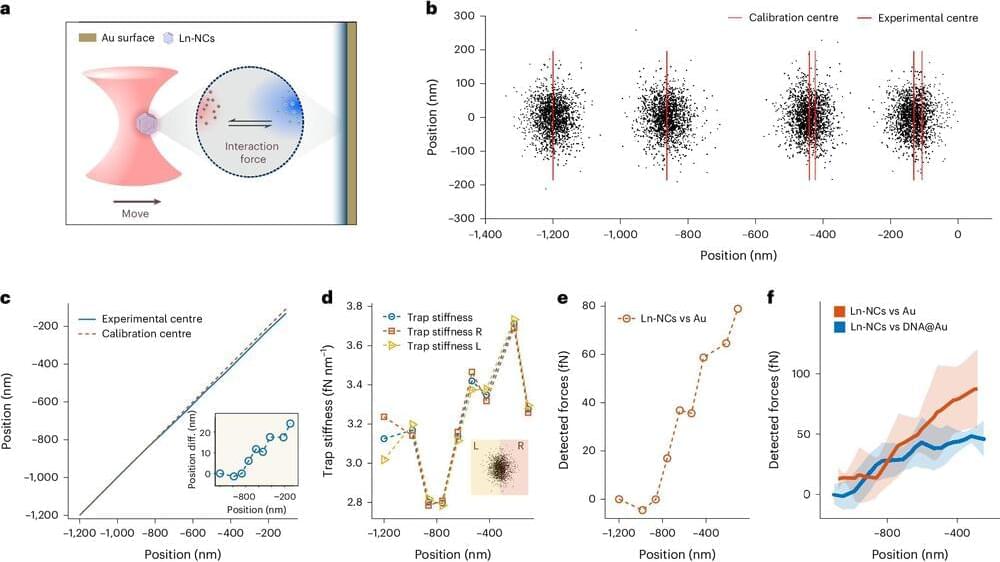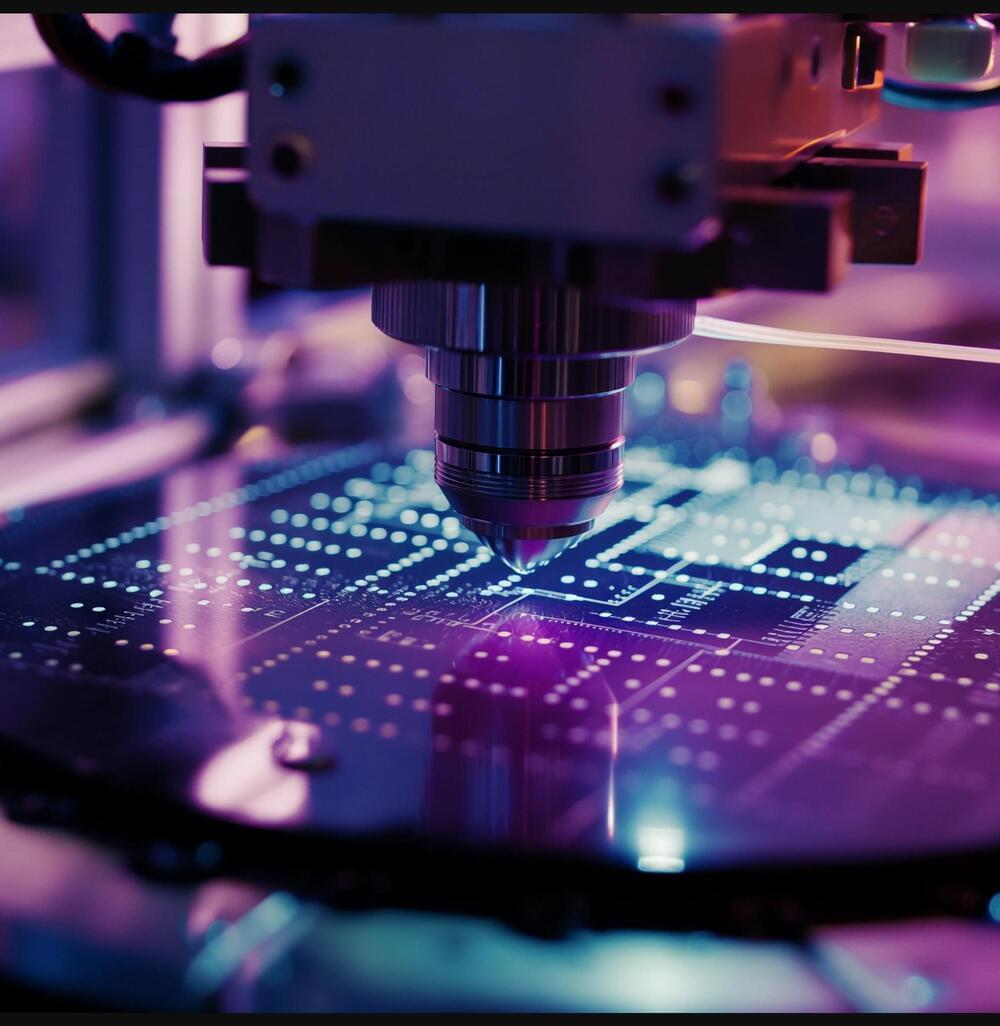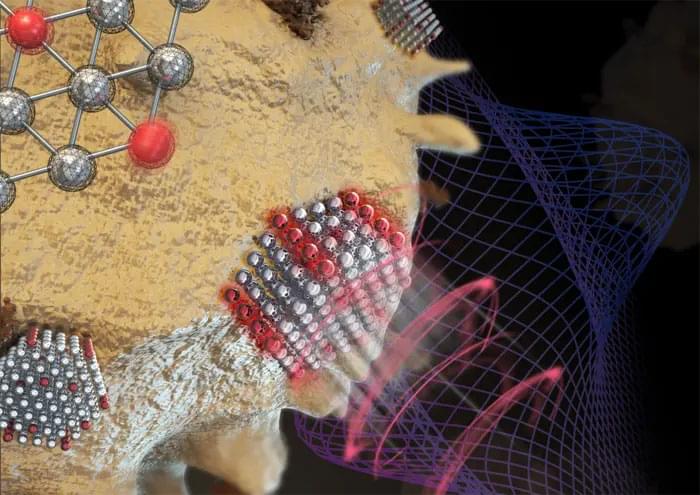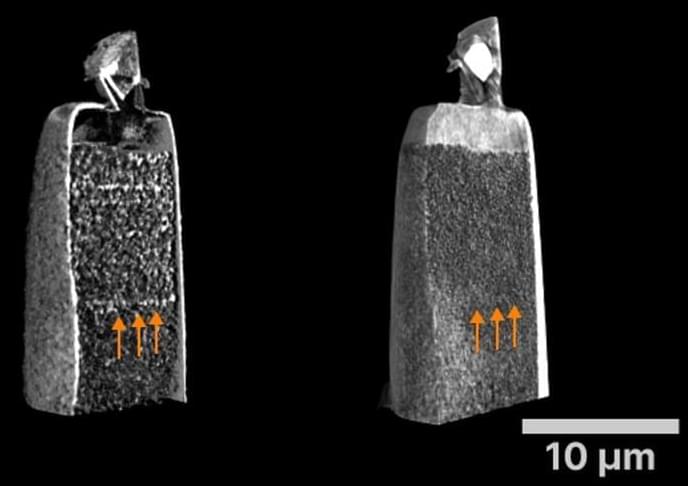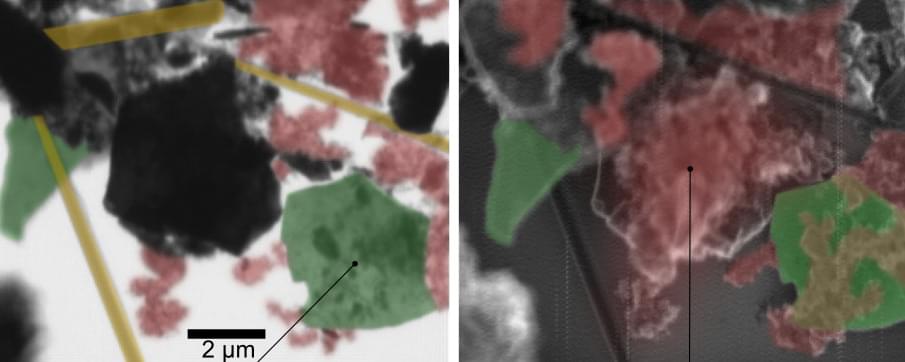New research has revealed a new way to measure incredibly minute forces at the nanoscale in water, pushing the boundaries of what scientists know about the microscopic world.
Category: nanotechnology – Page 60
In today’s semiconductor manufacturing industry, the most advanced chips are produced at 7 nm and below where there is little room for error. Despite the difficulty and unrelenting pressures found in this microworld, engineers and scientists remain undeterred in their pursuit of cutting-edge processes, techniques or materials that push the boundaries of Moore’s Law. Through endless experimentation at the nanoscale level, designers and researchers seek to uncover minute improvements that have the potential to translate into millions—if not billions—of dollars in revenue for chipmakers.
The emergence of carbon nanotubes (CNTs) as a compelling alternative material to address inefficiencies in extreme ultraviolet (EUV) lithography has the potential to be one of those innovations. However, contemporary production methods create CNTs that fall short of expectations. To realize the full potential of CNTs requires a new production method that significantly improves their quality. Only then can they help the semiconductor industry deliver on the insatiable demands for advanced chips.
Before exploring the production methods behind creating CNTs, one must first understand why they are so crucial in the semiconductor industry.
A series of advances in materials and design have enabled manufacturers to work at scales smaller than a billionth of a size to create devices and objects of nanoscopic dimensions. This is nanotechnology, which, although relatively new, produces materials and technologies already used in mass production.
The European Commission defines nano as any material that is at least 50% composed of particles between one and one hundred nanometers in size (i.e. one billionth of a meter, or one-millionth of a millimeter). Nanomaterials differ from conventional materials because of their unique properties such as higher electrical conductivity and mechanical strength, sensor technologies, and biomedical applications, and because they can create coatings that make surfaces more hydrophobic or self-cleaning.
The widespread use of nanotechnology is relatively new. Since 2000, nanomaterials have been used industrially as new research and experimental designs have made their effectiveness in different sectors clear. For example, in the health field, nanotechnology helps to reduce diagnostic errors and to develop nanobots (microscale robots) to repair and replace intercellular structures, or repair DNA molecules; in the chemical sector, it facilitates coating devices with nanoparticles to improve their smoothness and heat resistance; in manufacturing, materials developed with nanotechnology enhance the performance of the final product by improving heat resistance, strength, durability, and electrical conductivity.
Groundbreaking research has revealed a new way to measure incredibly minute forces at the nanoscale in water, pushing the boundaries of what scientists know about the microscopic world.
The significant nanotechnology advance was achieved by researchers from Beihang University in China with RMIT University and other leading institutions including the Australian National University and University of Technology Sydney (Nature Photonics, “Sub-femtonewton force sensing in solution by super-resolved photonic force microscopy”).
The new technique, involving a super-resolved photonic force microscope (SRPFM), is capable of detecting forces in water as small as 108.2 attonewtons – a scale so minute that it compares to measuring the weight of a virus.
As information technology is moving toward the era of big data, the traditional Von-Neumann architecture shows limitations in performance. The field of computing has already struggled with the latency and bandwidth required to access memory (“the memory wall”) and energy dissipation (“the power wall”). These challenging issues, such as “the memory bottleneck,” call for significant research investments to develop a new architecture for the next generation of computing systems. Brain-inspired computing is a new computing architecture providing a method of high energy efficiency and high real-time performance for artificial intelligence computing. Brain-inspired neural network system is based on neuron and synapse. The memristive device has been proposed as an artificial synapse for creating neuromorphic computer applications. In this study, post-silicon nano-electronic device and its application in brain-inspired chips are surveyed. First, we introduce the development of neural networks and review the current typical brain-inspired chips, including brain-inspired chips dominated by analog circuit and brain-inspired chips of the full-digital circuit, leading to the design of brain-inspired chips based on post-silicon nano-electronic device. Then, through the analysis of N kinds of post-silicon nano-electronic devices, the research progress of constructing brain-inspired chips using post-silicon nano-electronic device is expounded. Lastly, the future of building brain-inspired chips based on post-silicon nano-electronic device has been prospected.
Keywords: brain-inspired chips; neuron; phase change memory; post-silicon nano-electronic device; resistive memory; synapse.
Copyright © 2022 Lv, Chen, Wang, Li, Xie and Song.
Researchers at the Hebrew University of Jerusalem say they have developed a way to accurately predict the behavior of cancer cells, which will advance diagnosis and treatment of the disease.
The new diagnostic tool uses AI machine learning combined with nanoinformatics (observing nanomaterials) to classify cancer cell behavior in individual patient biopsies, potentially paving the way for personalized monitoring of the progression of the disease and the impact of treatments.
The study was led by Hebrew University doctoral student Yoel Goldstein and Prof. Ofra Benny from its School of Pharmacy in the Faculty of Medicine, working with Prof. Tommy Kaplan, the head of the Department of Computational Biology at the School of Engineering and Computer Science.
X-ray microscopes are essential for examining components and materials because they can be used to detect changes and details in the material. Until now, however, it has been difficult to detect small cracks or tiny inclusions in the images. By developing a new method, researchers at the Helmholtz-Zentrum Hereon are now able to visualize such changes in the nanometer regime. In particular materials research and quality assurance will profit from this development.
The team reported on their new development in the scientific journal Optica (“Nanoscale dark-field imaging in full-field transmission X-ray microscopy”).
The quality must be right. This also applies to materials science. When metal parts are welded together, you need to know whether the weld seam is any good — or whether small cracks or pores have formed inside, which could lead to failure. High-performance materials, e.g. for electrodes in electric car batteries or fuel cells, should not contain defects to allow the current to flow undisturbed.
Calculations and experiments reveal that water microdroplets may play role in soil formation.
A new method in spectromicroscopy significantly improves the study of chemical reactions at the nanoscale, both on surfaces and inside layered materials. Scanning X-ray microscopy (SXM) at MAXYMUS beamline of BESSY II enables the investigation of chemical species adsorbed on the top layer (surface) or intercalated within the MXene electrode (bulk) with high chemical sensitivity. The method was developed by a HZB team led by Dr. Tristan Petit. The scientists demonstrated among others first SXM on MXene flakes, a material used as electrode in lithium-ion batteries.
Since their discovery in 2011, MXenes have gathered significant scientific interest due to their versatile tunable properties and diverse applications, from energy storage to electromagnetic shielding. Researchers have been working to decipher the complex chemistry of MXenes at the nanoscale.
The team of Dr. Tristan Petit now made a significant progress in MXene characterization, as described in their recent publication (Small Methods, “Nanoscale surface and bulk electronic properties of Ti 3 C 2 Tx MXene unraveled by multimodal X-ray spectromicroscopy”). They utilized SXM to investigate the chemical bonding of Ti 3 C 2 Tx MXenes, with Tx denoting the terminations (Tx=O, OH, F, Cl), with high spatial and spectral resolution. The novelty in this work is to combine simultaneously two detection modes, transmission and electron yield, enabling different probing depths.
